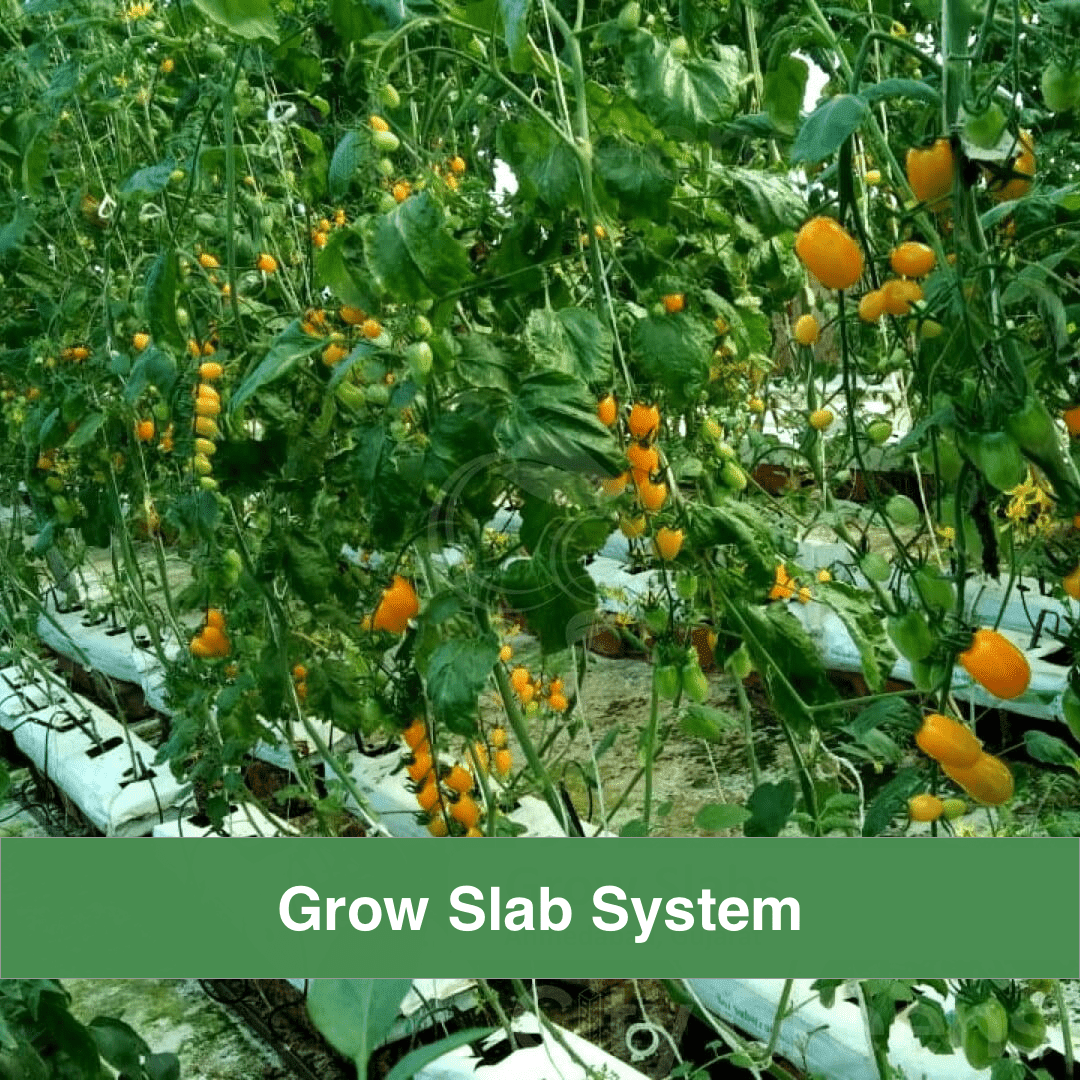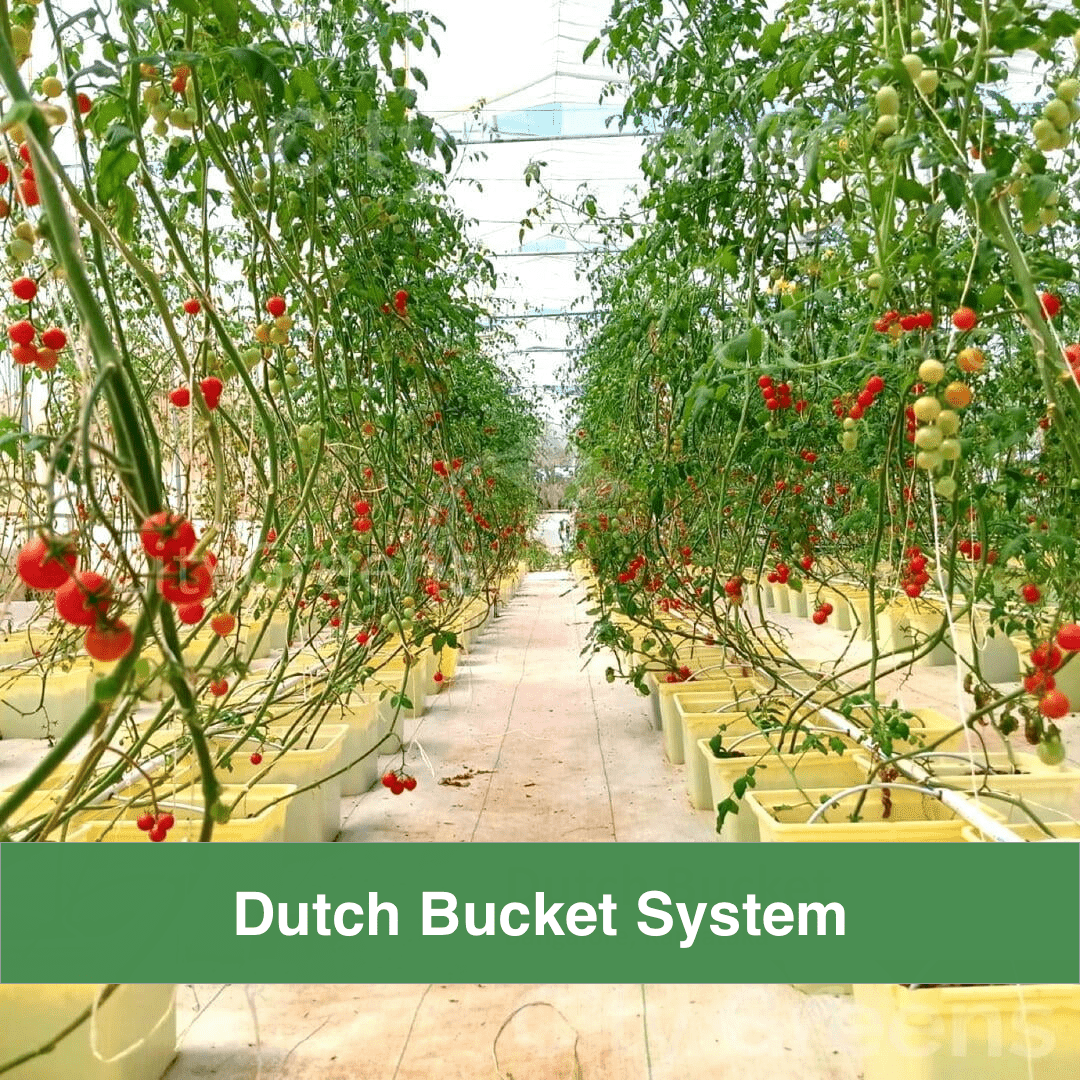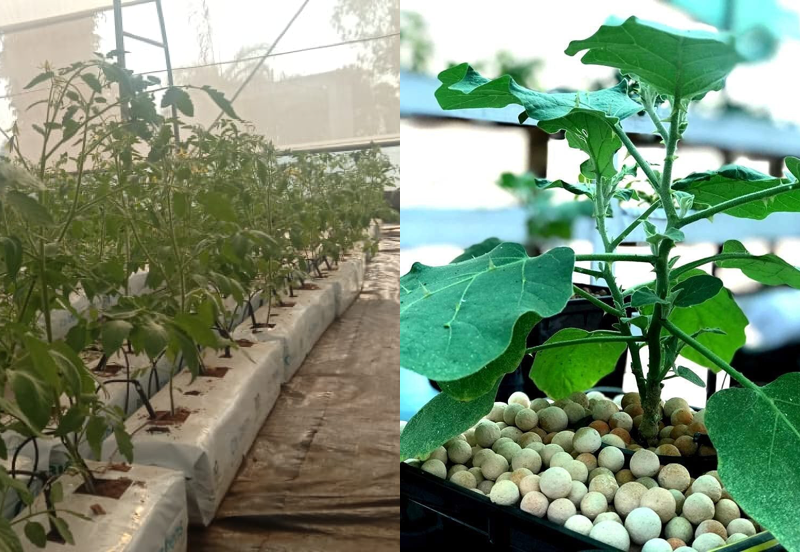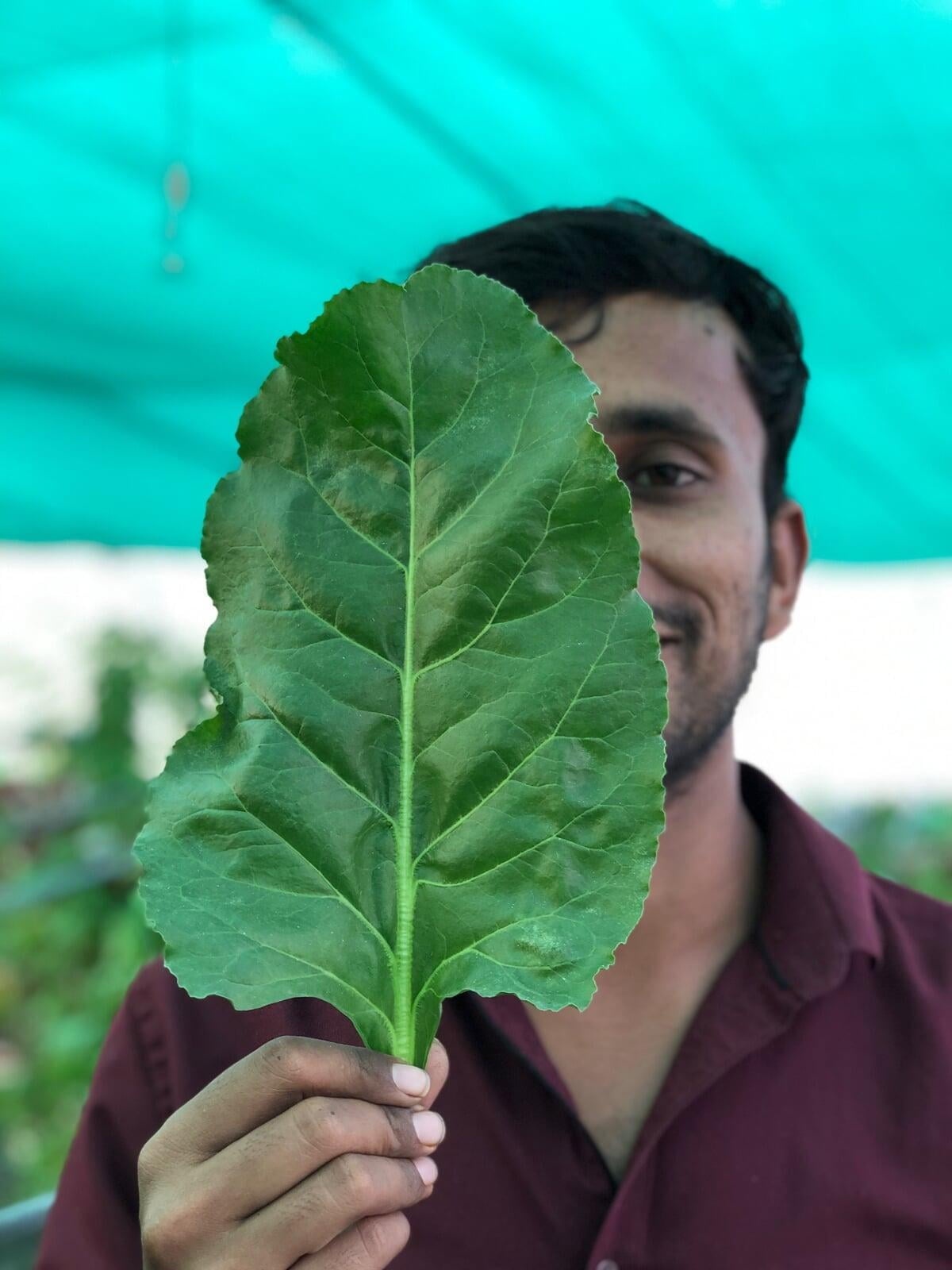Grow Bag System
This system uses bags made of porous fabric or plastic to grow plants. Plants are grown directly in the bags filled with a growing medium such as soil or a soilless mix like cocopeat. In a commercial grow bag system, the bags are typically made of high-quality, durable materials such as heavy-duty plastic or synthetic fabric. The use of grow bags in a commercial setting offers several advantages, including the ability to grow crops in a variety of locations, reduced water usage compared to traditional field-based agriculture, and increased crop yield per square foot of growing space.
Dutch Bucket System
It is a recirculating hydroponic growing system that uses buckets or containers filled with a growing medium such as hydrotons, coconut coir, or vermiculite, to support plant growth. In this system, a small hole is made in the bottom of the bucket, and a drip line is inserted to provide a constant supply of nutrient-rich water to the plant roots. This system is popular among hydroponic growers as they are relatively inexpensive to set up, can be easily scaled up or down depending on the size of the growing operation, and allow for greater control over the nutrient solution and pH levels.
Key points to consider!
Water Usage
One study published in the Journal of Agricultural Science and Technology in 2015 compared the water use efficiency of tomato plants grown in a Dutch bucket system and a soilless grow bag system. The study found that the Dutch bucket system used 50% less water than the grow bag system, while producing similar yields of tomato fruits.
Another study published in the Journal of Horticultural Science & Biotechnology in 2016 compared water and nutrient use in a closed-loop Dutch bucket system and an open hydroponic system using grow bags. The study found that the closed-loop Dutch bucket system used 25% less water and 25% less nutrients than the open hydroponic system, while producing similar yields of cucumber fruits.
Maintenance
Maintenance
Both grow bag and Dutch bucket systems can be easy to maintain in a commercial setting, but each system has its own unique maintenance requirements.
Grow bag systems can be easier to set up & maintain initially, as they require minimal equipment and can be set up quickly. However, grow bags can be more difficult to clean and reuse between crops, as the bags can harbor pathogens or debris. They also require regular monitoring and adjustment of nutrient levels and pH, which can be time-consuming.
Dutch bucket systems can require more initial investment in equipment and infrastructure, but can be easier to maintain in the long term. The buckets can be easily cleaned and sterilized between crops, reducing the risk of pathogen buildup.
Yield
One study published in the International Journal of Agriculture and Biology compared the yields of tomatoes grown in grow bags and Dutch buckets in a greenhouse environment. The results showed that the Dutch bucket system had a higher yield per plant compared to the grow bags, with an average yield of 1.98 kg/plant compared to 1.49 kg/plant in the grow bags.
Another study published in the Journal of Plant Nutrition compared the yields of lettuce grown in grow bags and Dutch buckets in a hydroponic system. The results showed that the Dutch bucket system had a higher yield per square meter compared to the grow bags, with an average yield of 19.38 kg/m2 compared to 15.26 kg/m2 in the grow bags.
Though Dutch bucket systems are more efficient in many ways we predominantly see more no. of grow bag setups in India, due to high initial setup costs and lack of understanding of the system.
There is one more important reason why we find more grow bag setups in India than Dutch bucket systems, comment here to know why!




